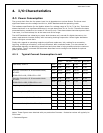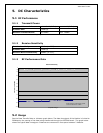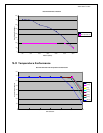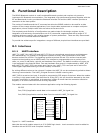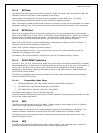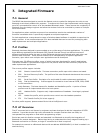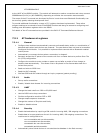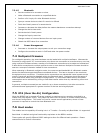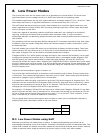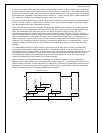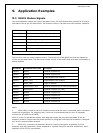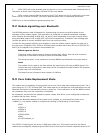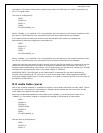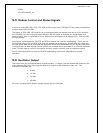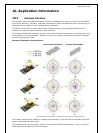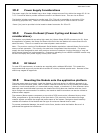
www.ezurio.com
8. Low Power Modes
The current drain from the Vcc power input line is dependent on various factors. The three most
significant factors are the voltage level at Vcc, UART baud rate and the operating mode.
The hardware specification for the blu2i module allows for a voltage range of 3.6 to 7.0v at Vcc. Tests
have shown that there is no significant difference in current draw when Vcc is 5 or 6V.
The UART baud rate has a bearing on power drain because as is normal for digital electronics, the
power requirements increase linearly with increasing clocking frequencies. Hence higher baud rates
result in a higher current drain.
Finally with regards to operating mode the significant modes are; idle, waiting for a connection,
inquiring, initiating a connection and connected. With connected mode, it is also relevant to
differentiate between no data being transferred and when data is being transferred at the maximum
rate possible.
The operating mode can best be described by stating the AT commands required to enter that mode.
In addition, there are certain S Registers which have a direct impact on power consumption, which
are described next.
The blu2i Module has a single LED which can be configured to display connection status. Tests have
shown that this LED can consume up to 5.3mA which is more than double the current draw when in
Idle mode. S Register 534 can be used to completely disable this indicator.
S Registers 508 to 511, which specify the page and inquiry scan intervals and windows, can be used
to adjust the average current drain when in discoverable and or connectable modes. Registers 508
and 509 specify the interval and window for page scans and registers 510 and 511 specify the
interval and window for inquiry scans. Register pairs 508/509 and 510/511 describe duty cycles when
the blu2i module goes into scan modes. It is while scanning that the highest current draw occurs. The
average current draw is determined by simple arithmetic using the values stored in the 508/509 and
510/511 register pairs.
Typical current consumption is given in Section 4.1.
The current drain while waiting for a connection or discoverable mode is about 30 times higher than
in idle mode. This is when the page/inquiry scan duty cycle is 100%. These modes give the quickest
response to a page or inquiry request from a remote peer.
It is possible to reduce the duty cycle down to as low as 0.5% at the expense of response time. The
response time can be specified via S Registers 508 and 510 for page and inquiry respectively, where
the worst case response time can be as high as 2.5 seconds. Then the duty cycle can be varied by
changing the value of S Registers 509 and 511 appropriately.
For example, if S Register 508 and 510 are both set to 1000ms and S Register 509 and 511 are both
set to 11ms then the duty cycle is reduced to 1%, this means that average current drain at 5.0v will
be 2% of 65mA plus the normal idle mode current, that is, it is as low as 2.75mA. However, in this
case, it can take up to 1 second to establish a connection.
The connected state current consumption while a master or slave can be considerably reduced by
enabling Sniff mode, described in detail in the next section.
8.1 Low Power Modes using Sniff
Bluetooth connections are master/slave in nature. A master sends packets and a slave has to
acknowledge that packet in the next timeslot. Timeslots in Bluetooth are 625 microseconds wide. This
implies that a master will always know when packets will be sent and received, which further means it
is able to optimise power usage by switching on power hungry circuitry only when needed.
mA
3.6V 3.20 Current per LED (when fitted)
5.0V 5.30



